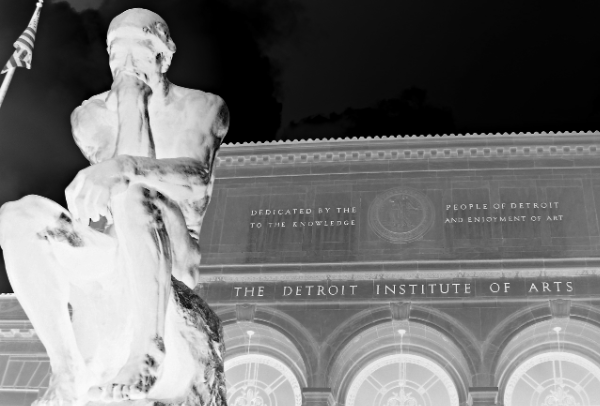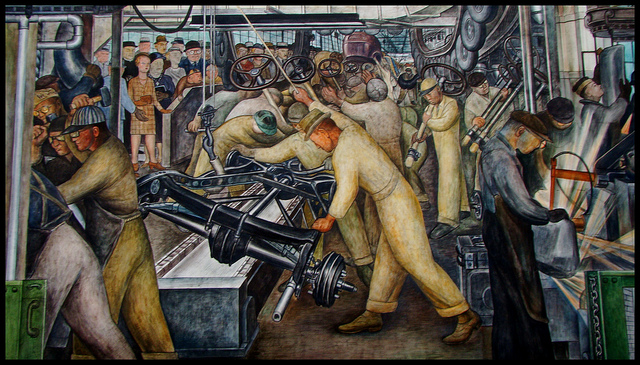If everything good about Detroit is destroyed, is it still Detroit?

[DIA “Thinker” image modified from CC photo by Michael Barera | Wikimedia Commons]
This past Wednesday, Detroit Emergency Manager Kevyn Orr was in Chicago talking to a group of philanthropists, some of whom are likely holding some of Detroit’s debt, and he told them, “We can’t liquidate or sell off Detroit like many of us do when we go into our representations…This isn’t a traditional reorganization for a profit-making enterprise, this is the saving of a great American city.”
This comment is in stark contrast to the news that came out yesterday that Orr has asked for an appraisal of the Detroit Institute of Arts’ priceless collection of art.
The once unthinkable is suddenly thinkable.Detroit emergency manager Kevyn Orr is considering whether the multibillion-dollar collection at the Detroit Institute of Arts should be considered city assets that potentially could be sold to cover about $15 billion in debt.
How much is the art at the DIA worth? Nobody knows exactly, but several billion dollars might well be a low estimate.
Even the possibility has set off a sharp reaction. The DIA hired a bankruptcy lawyer to advise it, and philanthropist and DIA patron A. Alfred Taubman said this evening that “it would be a crime” to sell any of the DIA’s collection to satisfy city creditors.
“I’m sure Mr. Orr, once he thinks about it, will certainly not choose that as one of the assets,” Taubman said. “It’s not just an asset of Detroit. It’s an asset of the country.”
The DIA’s collection has original pieces from Degas, van Gogh, Rembrandt and a remarkable mural titled “Detroit Industry” by Diego Rivera.

[CC image credit: Vasenka | Flickr]
Orr justified the move through his spokesman, Bill Nowling, who told reporters that they basically had to do this because debt holders are demanding it.
“We have to look at everything on the table…” {…}“The creditors can really force the issue,” Nowling said. “If you go into court, they can object and say, ‘Hey, I’m taking a huge haircut, and you’ve got a billion dollars worth of art sitting over there.’ ”
Nowling said that some creditors already have asked Orr whether the DIA collection is “on the table.”
If even one piece of the DIA’s collection was sold to pay down Detroit’s debt, it would be a tragedy of epic proportions. Not only is this a national treasure held in trust by the people of Detroit, it is a major draw to the area, bringing tourism dollars into the city. Selling the DIA’s collection would be eating Detroit’s seed corn in a very real sense.
We as Michganders have to ask ourselves this question: if we forsake all that is good about our state’s largest city, what will remain? We can not allow Detroit to slowly wind down like a failing clock until it is no longer a city at all but just a carcass, picked over by vultures and left to rot in the sun.
Kevyn Orr is right. We cannot “liquidate or sell off Detroit”. This idea must be taken off the table.



